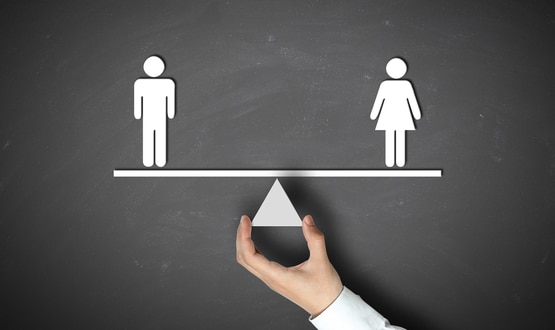As the debate continues over the reporting system for the gender pay gap, guest columnist Dr Ella Hendrix says more visibility over the monetary spread across the sexes can only be a good thing.
The end of the last financial year was shrouded in news about the gender pay gap as, for the very first time, large companies across Great Britain had to report on pay differences between male and female employees.
As a new legal requirement for companies with more than 250 employees – and coming with ‘unlimited fines’ from the Equalities and Human Rights Commission (EHRC) for failing to meet the deadline – over 10,000 companies submitted their reporting of salaries and bonuses, sharing their piece of the jigsaw on gender pay.
The headline results were revealing to say the least. Based on the median hourly pay, 78% of the companies that submitted reports pay men more than women, while only 14% revealed a gender pay gap that favours female colleagues. Just 8% of companies in Great Britain reported no pay gap at all.
So how does this gap translate across the UK industries? While the median hourly pay gap overall was in favour of men, there were some industries reporting a higher gap than most. Specifically, the construction, finance and insurance, education and communication industries all reported a median of more than 10% in favour of men.
Let’s dig a little deeper into a couple of the industries covered in the reporting to gain more of an understanding about the differences.
A narrative on gender pay
Working patterns is one contributing factor to a difference in gender pay. There are three times more women than men in part-time work, a work pattern that tends to be lower paid than full-time employment.
However, when delving into the care and leisure industries – two sectors where part-time employees are quite common – women are in four out of five full-time roles but still earn 9% less than their male colleagues. What’s more, when looking at bonuses, for these industries they are still very much weighted in favour of men.
At the other end of the scale is the proportion of men in higher paid positions. For the airline industry where the traditional roles of male pilots and female cabin crew are still inherent, many airlines reported a gender pay gap of at least 45%. For Ryanair, this is at a staggering 72%, with just 3% of women in higher-paid roles.
The larger representation of men on company executive boards, a position that often commands the greatest pay differences in an organisation, is another reason for the overall sway in favour of men.
Of course, the size of an organisation also plays a part in swinging the pay gap and must also be taken into consideration.
Example: gender pay in care
Traditionally with a more female workforce, the care industry is one sector where you’d expect there to be a more balanced picture in terms of gender pay. Whether it’s in social care, domiciliary care or a residential care setting, there is an over-representation of women in the workforce.
Despite this, reports suggest that in care greater bonuses are often paid to male colleagues. As a general rule of thumb, the mean gender pay gap is still very much weighted in men’s favour.
Care homes are a notable example of where there is a bias towards male pay. Some residential homes, such as Outlook Care, reported a 10% pay gap in favour of men, higher than the 9% reported pay gap for the entire industry.
There are companies that buck this trend. As an example, national home care provider Helping Hands reported a minimal hourly gender pay gap that is almost 6% higher for female colleagues, with 90% of women in higher paid jobs. With a “predominantly female workforce” at most levels of the organisation, unlike many other private care providers, it also has a board of directors that is half and half, male and female.
At the end of the day, gender equality is what this extra legislation and resulting analysis should be aiming to achieve – an even split between all colleagues, regardless of their gender.
Debate over reporting mechanisms
There is much speculation over the validity of the gender pay reporting mechanisms, with some referring to using the means and medians as a ‘crude’ interpretation of the data.
Regardless of this, the results still highlight some interesting gender differences, whether it’s more men than women in higher paid positions or vice versa. And, for employers, they reveal where conscious efforts can be made towards attracting a more diverse workforce.
As the chief executive of the Fawcett Society, Sam Smethers, said to the Guardian, “Even good employers can have significant pay gaps. What matters is their action plan to tackle it and deal with any inequality they find.”
As the debate continues over the validity of the gender gap’s reporting system, more visibility over the monetary spread across the genders can only be a good thing. While a straightforward like-for-like comparison of gender pay in the same role is nigh impossible, the medians and means do provide an insight into the emerging industry-wide trends and how each company supports, values and awards its employees.
It’s hard to not see the reports as a valuable resource for those considering a new career choice, but more importantly for the companies themselves in taking action to move towards more gender equality.

